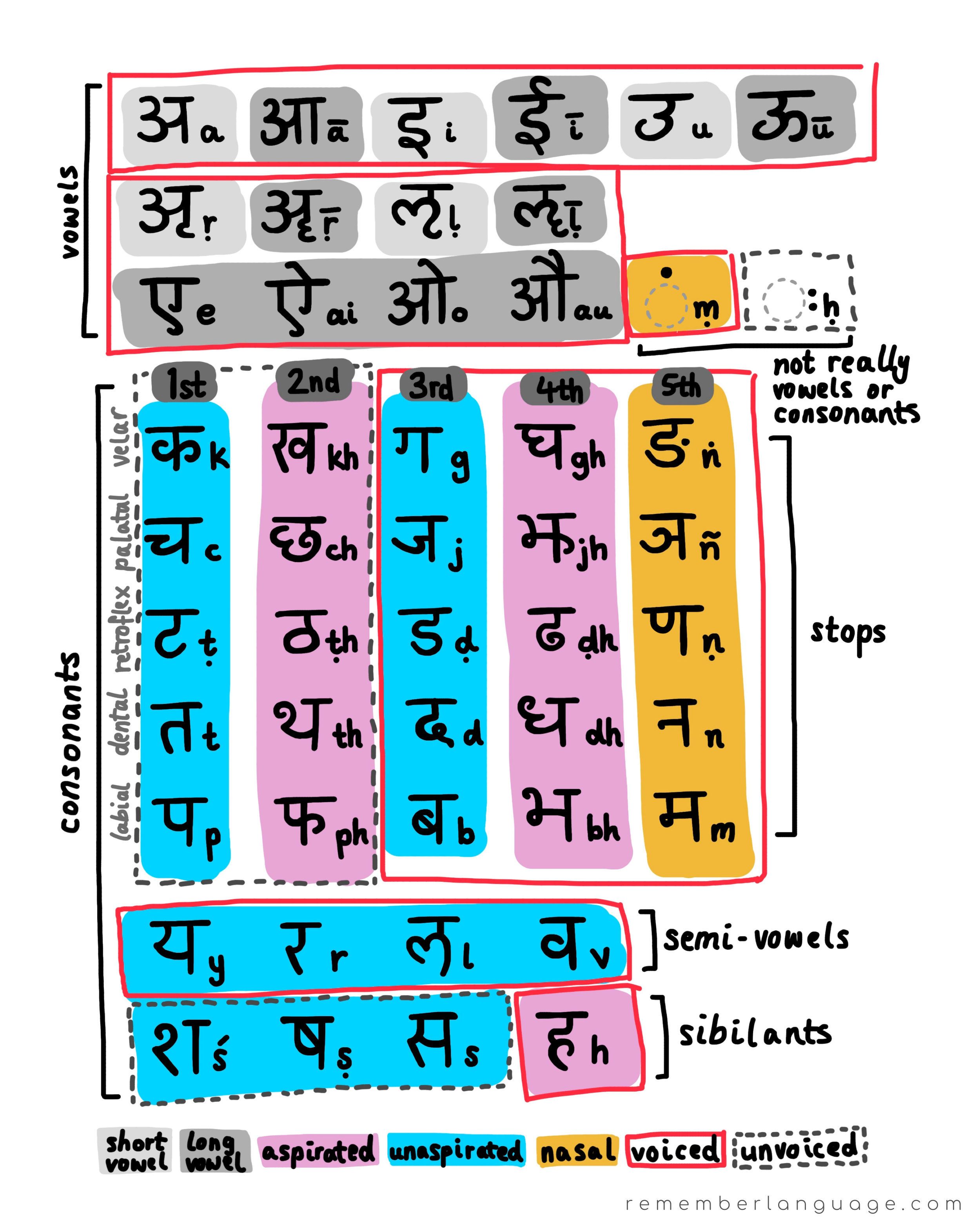[SKT] ALPHABET
DEVANAGARI SCRIPT
Sanskrit is written using characters from the devanagari script. In the same way that English is written using letters from latin.
Technically, devanagari is an abugida, rather than an alphabet. HOWEVER, it's colloquially acceptable to say alphabet. So let's keep it colloquial.
If you're keen, there's more detail about abugidas in Default Vowel.
ALPHABET ORDER
Here we have Sankrit's equivalent of a b c d e f g h i j k l m n o p q r s t u v w x y z.
Fig.1 Sanskrit alphabet in sequence
Instead of 26, we're looking at 49 characters.
Or 48, if you don't count the second L-vowel (the one with the horizontal line on its head). Which, apparently, appears nowhere in the actual language other than the alphabet. Who said Sanskrit wasn't living for thrillz.
For most languages, knowing the alphabet sequence is strictly beneficial when going on a dictionary-bender.
In Sanskrit, the alphabet sequence tells us about character type and where the pronunciation falls in the mouth.
The following diagram follows the same alphabet sequence, but includes the breakdown by speech category.
Fig. 2 Sanskrit alphabet organised by speech category
OVERVIEW OF CHARACTER TYPES
VOWELS
First up in the alphabet we have all the vowels.
There are short vowels, long vowels, and complex vowels. The complex vowels are treated as long vowels.
Note: all the vowels have contracted versions, which are used when the vowels appear in the middle or end of a word.
ANUSVARA + VISARGA
These two characters are a bit of a headache – people tend to disagree about their exact pronunciation and behaviour. Both characters sit between the vowels and consonants within the alphabet, but they're not really classified as either.
If pushed, they'd fall into the vowel category.
CONSONANTS
There are a few different categories within the consonants:
- Stops
- Semivowels
- Sibilants
STOPS
These characters generally get shimmied into a table to be divided by sound complexity and location of articulation.
SOUND COMPLEXITY: voiced, unvoiced, aspirated, unaspirated, nasal.
LOCATION OF ARTICULATION: velar, palatal, retroflex, dental, labial.
Fig. 3 The locations of articulation: velar, palatal, retroflex, dental, labial
I sincerely apologise for how creepy that image is.
SEMIVOWELS
These characters are technically consonants, but they also have vowel equivalents.
Fig. 4 Semivowels (left) and their vowel-equivalents (right)
SIBILANTS
Lastly, we have the three s sounds, plus a regular old h.
This h is sometimes classified as a sibilant, and sometimes rolls solo. Either way, it always bookends the alphabet.
As well as this article.








